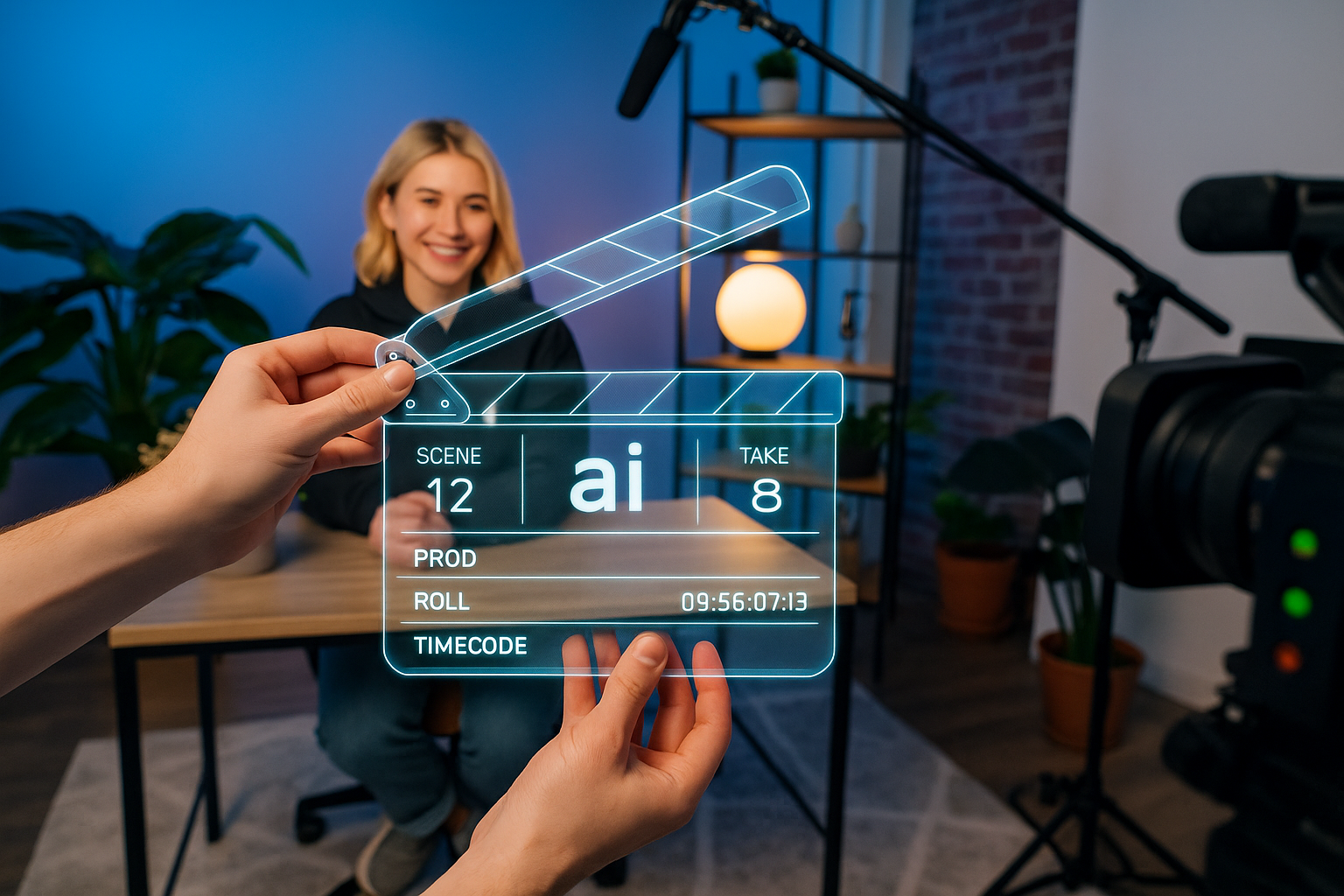PPTs Are Good, But Not Enough
If you’ve ever created a PowerPoint presentation, you know the effort it takes. You might spend four or five days perfecting the content and design — only to present it once to a class of 40–50 people and then let it sit in a folder, never to be opened again. That presentation is effectively dead.
The new age of teaching is different. Instead of being a one-time event, your presentation can be evergreened by turning it into a video. A video has reach far beyond the classroom — tens of thousands of learners can access it on platforms like YouTube, or through MOOCs (think Coursera, edX).
PowerPoint has been a great backbone of teaching. It’s concise, it’s visual, and it’s an excellent assistant to the teacher in the room. But in today’s digital-first learning world, slides alone are not enough.
And here’s the catch: while video is the obvious next step, making a good one is hard. Really hard. Or is it? Could there be a ChatGPT-like AI for turning slides into videos? Let’s explore.
The Traditional Workflow: Effective, But Demanding
So what does it actually take to turn a PowerPoint into a proper course video today? For most teachers and trainers, it’s not a one-step process. It’s a marathon.
It usually looks something like this:
- Build your slides — carefully arranging text, visuals, and animations.
- Write a script — because slides don’t explain themselves.
- Record — which means lights, cameras, microphones, and a quiet room.
- Re-record — because mistakes happen, and the first few takes rarely feel right.
- Hire an editor — who works in Adobe Premiere Pro, Final Cut Pro, or iMovie to stitch everything together.
- Go back and forth on edits — trimming, syncing, pacing, and polishing until it feels just right.
- Add finishing touches — sound effects, B-rolls, and transitions, all of which take time and budget.
By the time you’re done, that one video might have taken weeks of effort and more resources than most educators or trainers can justify.
This is why many large universities have invested in dedicated video production studios — with full teams, professional equipment, and big budgets to digitize their courses. That’s great for them, but what about individual teachers, smaller institutions, or independent creators?
For most, the traditional workflow is simply too heavy to scale.
Where Current Tools Help — and Where They Don’t
Over the past decade, new tools have made video creation easier than ever.
- Loom, Descript, Google Vids: Quick and simple for screen recordings.
- Synthesia and other avatar-based platforms: Great for professional-looking delivery without a camera.
- Editing suites like Premiere, Final Cut Pro, and iMovie: The gold standard for complete creative control.
All of these have contributed to making video more accessible. But the question isn’t just “can we make a video?” — it’s “can we make a video that supports learning?”
That’s where research gives us important clues:
- Framing matters. A large-scale MIT study of MOOCs (Guo, Kim & Rubin, 2014) found that learners engage more when the instructor is visible alongside slides (picture-in-picture or side-by-side) rather than just narration. Videos under six minutes also showed far higher completion rates.
- Slide + person is better than slide alone. Richard Mayer’s multimedia learning research (Mayer, 2009; Fiorella & Mayer, 2018) shows that combining instructor presence with visuals improves both attention and recall.
- Eye contact builds trust. Research on instructional video design (Kizilcec et al., 2015; Beege et al., 2023) demonstrates that learners perceive instructors as more credible and stay more engaged when they make eye contact with the camera.
- Dynamic visuals help. Static slides alone quickly lose attention. Experiments show that highlighting, zooming, or animating key elements while speaking about them improves retention (Fiorella & Mayer, 2018).
- Sound cues matter. Mayer & Moreno (2003) demonstrated that even subtle audio signals when a new idea appears help learners focus on the right content at the right time.
- Eye-tracking research. Recent reviews (Deng et al., 2022 — link) confirm that learners split attention between the instructor and slides. Good design aligns the two so learners don’t have to choose.
When we look at current tools through this lens, the gap becomes clear:
- Screen recorders capture slides and voice, but miss instructor presence and signaling.
- Avatar platforms add presence, but often ignore PowerPoint animations or eye contact.
- Professional editors can achieve it all — but only with significant expertise, time, and budget.
So while today’s tools make it easier to create videos, they don’t always make it easier to create effective learning videos.
How AI Can Reshape Course Video Creation
The traditional workflow is long and costly. Current tools help in parts, but they don’t always make videos that truly support learning. This is where AI changes the game.
Instead of weeks of scripting, recording, and editing, imagine this:
- You upload your PowerPoint slides.
- AI adds signals and cues — a gentle sound when a new idea appears, or a highlight on the keyword being explained.
- The instructor (or an AI avatar) appears alongside the slides, creating presence and connection while keeping the content central.
- Animations and B-rolls are layered in to make abstract concepts clearer and more memorable.
- The pacing, transitions, and even sound design are all taken care of — automatically.
- And with a click, the same video can be translated into multiple languages — extending education to remote learners, local communities, and even languages that rarely see high-quality digital content.
What once required a camera crew, professional editors, and weeks of effort can now be done in minutes. And most importantly, the end result is not just a video — it’s a learning experience that holds attention, breaks language barriers, and makes knowledge accessible anywhere.
Our Mission
Education has always been about access. The classroom made it possible for dozens of students to learn together. The internet made it possible for thousands to join MOOCs and online platforms. The next leap is making high-quality learning videos available to anyone, anywhere, in any language.
We believe technology should not replace teachers, but amplify them. A great teacher with a simple PowerPoint presentation should be able to reach the same scale and impact as a university with a video studio.
Our mission is to make professional-quality learning videos accessible to every educator, trainer, and institution — no matter their size, budget, or technical skill. Because when slides can become engaging videos with presence, clarity, and even multilingual delivery, education stops being confined to one classroom or one language.
The promise of AI in education is not just faster production. It’s about giving every teacher the tools to reach more learners, connect more deeply, and make knowledge last longer.
And this is only the beginning. With rapid advancements in technology, we may soon move beyond videos as passive content. Imagine a world where learners can interrupt an AI avatar mid-video, ask a question, and get their doubts clarified instantly. That’s the kind of future we’re working toward — where teaching is not only scalable, but also interactive and personal.
Conclusion
PowerPoint presentations were a solid backbone for teaching in the past. But in a world where learners expect content online and educators want to reach audiences far beyond their classrooms, video has become the natural next step.
The challenge has always been the effort: weeks of recording, re-recording, and editing — or settling for tools that make videos look polished but don’t fully support how people learn. AI changes this equation. It allows us to bring presence, clarity, cues, animations, and even multilingual delivery into videos in minutes, not weeks.
But this is just the start. The future of learning videos won’t be passive at all. We may soon see AI avatars that can be interrupted mid-lesson, ready to answer a learner’s question in real time — transforming video into an interactive classroom without walls.
The goal is not simply to produce more content, but to create better learning experiences: videos that engage, explain clearly, and scale access to knowledge everywhere. That’s the journey we’re on.


 Abhay
Abhay


